Case Study
NTT DOCOMO INC. Tokai Branch
Centrally grasping information on disasters, etc., with 6-panel multi-display Efficiently collecting and sharing information to contribute to swift response and recovery
PDF:1.3MB
Communication
Improved CSR, Improved efficiency, Improved service
PN-V551 (55-inch) x 6 units
PN-W435 (43-inch) x 1 unit
PN-L803C (80-inch) x 1 unit
Implemented in June 2017 as a tool for collecting and sharing information at the Disaster Response Headquarters.
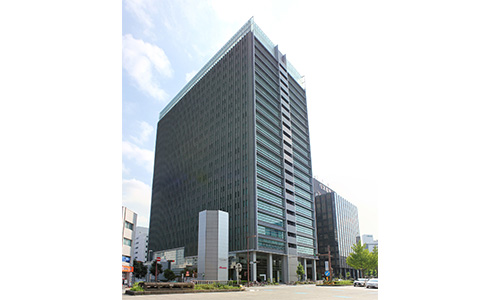
Nagoya, Aichi Prefecture, Japan
As one of NTT Docomo Inc.’s branches, NTT Docomo Tokai covers the four Tokai district prefectures of Aichi, Mie, Shizuoka, Gifu and
develops businesses, such as the provision of mobile communication services.
When a disaster occurs, speedily collecting, sorting, analyzing, and sharing various information on the situation of disasters in each area is essential for a swift response and early recovery. The Disaster Response Headquarters was looking for this type of image device that would enable central “visualization” of this necessary information.
- Key information such as the situation of disasters at each base station and images of the tsunami monitor cameras, etc., can be viewed on the 6-panel multi-display.
- Random images can be enlarged and displayed on 4 panels or 6 panels so that they can clearly confirm small text and maps.
- To ensure the system can be used immediately when disaster strikes, it is used regularly for Web meetings connecting each base. High productivity is achieved during regular operations as well.
Our company is in charge of a social infrastructure of a mobile network. Our mission is to provide stable communication, so we have endeavored to prepare for unexpected disasters and strengthen our various responses. As part of these endeavors, we have been promoting the efficiency of information collection and sharing by the Disaster Response Headquarters, which are started up in an emergency. We reviewed our conventional method of bringing individual PC monitors to collect information, looking for ways to organize the required information, and centrally grasp the disaster information.
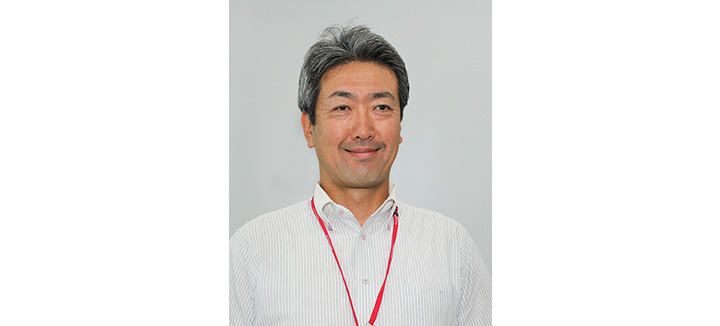
Masatoshi Nakatani
Network Department
Disaster Response Section manager
NTT DOCOMO INC. Tokai Branch
Many people participate in the Disaster Response Headquarters, including our administration as well as staff from the Disaster Response Section. We focused on the large-screen multi-display as a device that allows all participants to share information. With the 6-panel configuration, we can display six key elements, including (1) disaster information map for all base stations, (2) the detailed information, (3) broadcasts from all terrestrial tv stations, (4) L-ALERT (disaster information sharing system), (5) images from tsunami monitor cameras, and (6) Weather News. We also appreciated that we can enlarge a random screen to a 6-panel or 4-panel display as needed to confirm fine text and maps.
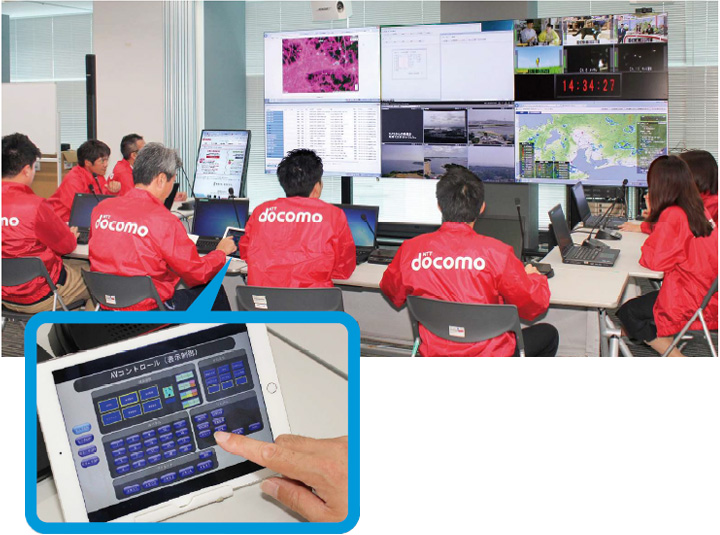
6-panel multi-display screens layout is set for easy operation with tablet terminals.
By implementing the 6-panel multi-display at the Disaster Response Headquarters, we were able to create central “visualization” of various information during a disaster. We anticipate that the reinforced information collection and sharing will contribute to swift response and early recovery. We also use the system as a monitor for Web meetings connecting each base during normal times, so our initial response when disaster does strike is faster. We also implemented the 80-inch BIG PAD. We can write into maps, use the BIG PAD as a whiteboard, and record and save the disaster response history, etc.
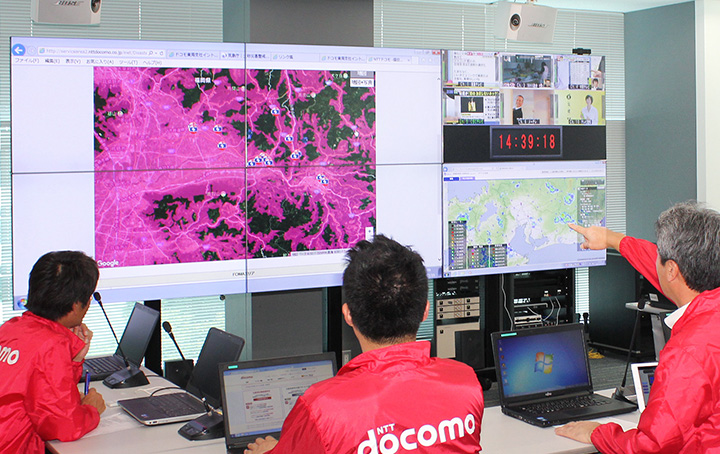
Maps, etc., are enlarged as needed so that detailed information can be easily recognized.
We will conduct practical drills at the annual national training sessions and each branch’s training sessions so that all headquarters members are skilled at using this new system. Through this practice, we will look for more effective usage methods and will work to further strengthen our disaster response.
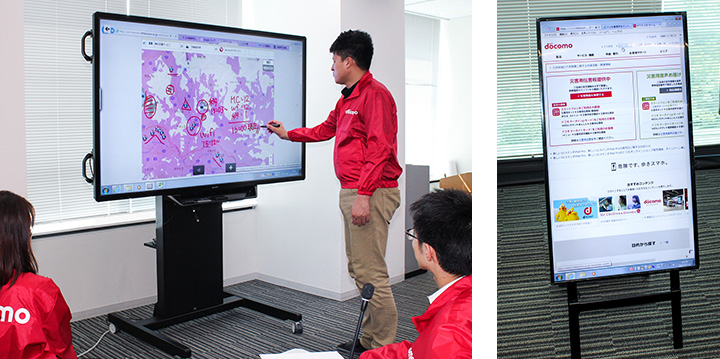
(Left)80-inch BIG PAD is installed and used to write into maps, etc.
(Right)43-inch display is implemented
to introduce disaster response
at exhibitions, etc.
Issued July 2017
